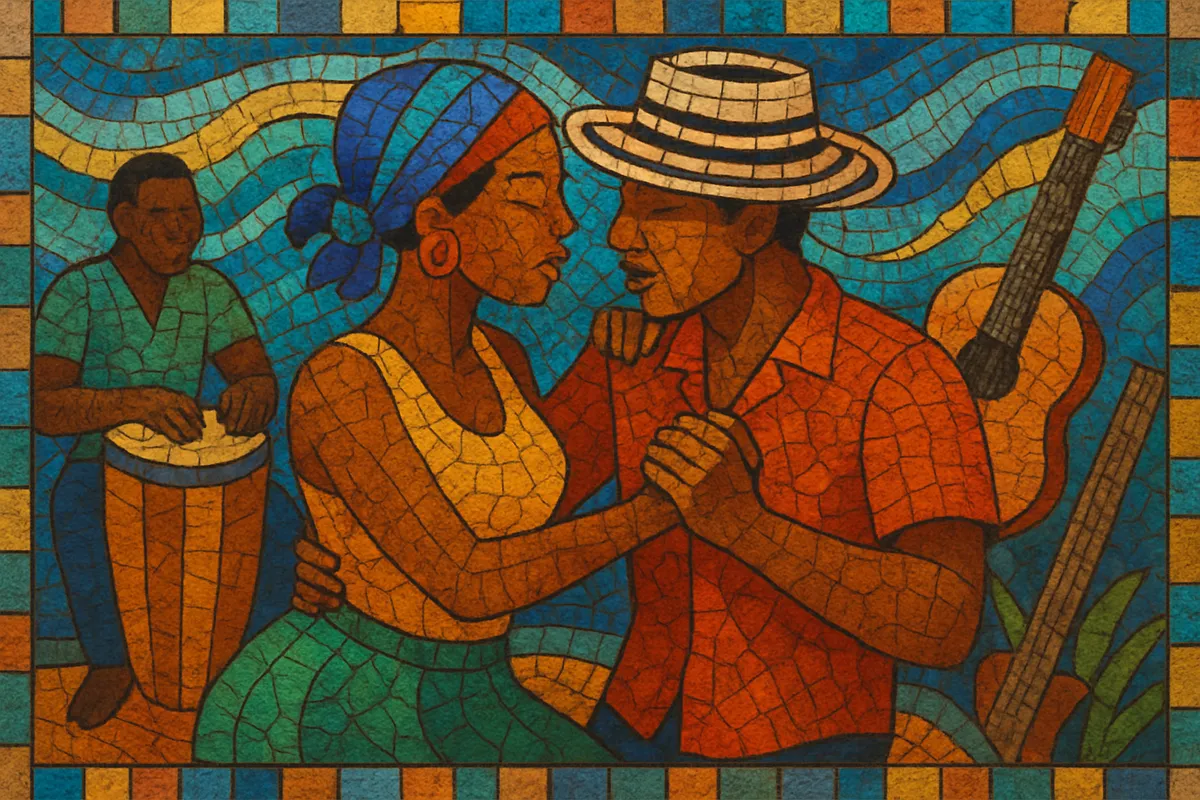Champeta is an Afro-Colombian dance music born around the Caribbean port city of Cartagena and nearby Barranquilla. It grew out of picó sound-system culture, where DJs blasted imported African records and Caribbean styles for working-class, largely Afro-descendant audiences.
Musically, champeta blends the bright guitar lines and kinetic polyrhythms of Congolese soukous and other African dance musics with local coastal percussion, call-and-response choruses, and a streetwise Spanish (often sprinkled with Palenquero) vocal delivery. Modern "champeta urbana" adds punchy digital drums, synth brass stabs, and club-ready arrangements while preserving the genre’s ultra-danceable feel.
The word "champeta" once carried a classist, racialized stigma (it also names a short machete-like knife); the community reclaimed it as a badge of pride. Today champeta is a vibrant emblem of Afro-Caribbean identity in Colombia, celebrated for its high-energy parties, colorful picó artwork, and irresistible grooves.
Champeta emerged in Cartagena’s working-class barrios via the picó scene—massive, custom-painted sound systems that spun imported African LPs (soukous, highlife, makossa) alongside Caribbean records (compás/compas, zouk, soca, reggae). Local dancers and MCs began improvising Spanish/Palenquero chants and percussion over these grooves. The music was first dubbed “champeta africana,” referencing the African records beloved in the picós.
As musicians began composing original songs with African-inspired guitars and coastal percussion, a homegrown style—often called “champeta criolla”—took shape. Artists like Charles King, Louis Towers, and Viviano Torres (Anne Swing) recorded anthems that translated the picó party energy into studio productions. The term “champeta,” once used pejoratively, was reclaimed by Afro-Colombian communities as a symbol of pride and identity.
Independent labels and local studios around Cartagena and Barranquilla helped codify the sound: sparkling soukous-style guitars, syncopated tambora/alegre/llamador percussion, simple but infectious choruses, and stories of street life, humor, and romance. Picó culture remained central—DJs popularized new singles through exclusive premieres and competitive sound clashes.
Affordable digital production and the rise of urban Latin music pushed champeta toward harder drums, sub-bass, and pop-friendly forms. "Champeta urbana" stars (e.g., Mr. Black, Kevin Flórez, Twister El Rey) took the style to national charts. Crossovers with reggaeton and mainstream Latin pop broadened its reach, while the classic picó tradition continued to fuel grassroots innovation.
International attention grew through viral dance trends, collaborations, and high-profile performances celebrating champeta’s dance moves and Afro-diasporic lineage. The genre today thrives both as a local cultural pillar and a flexible, global-ready club style.


